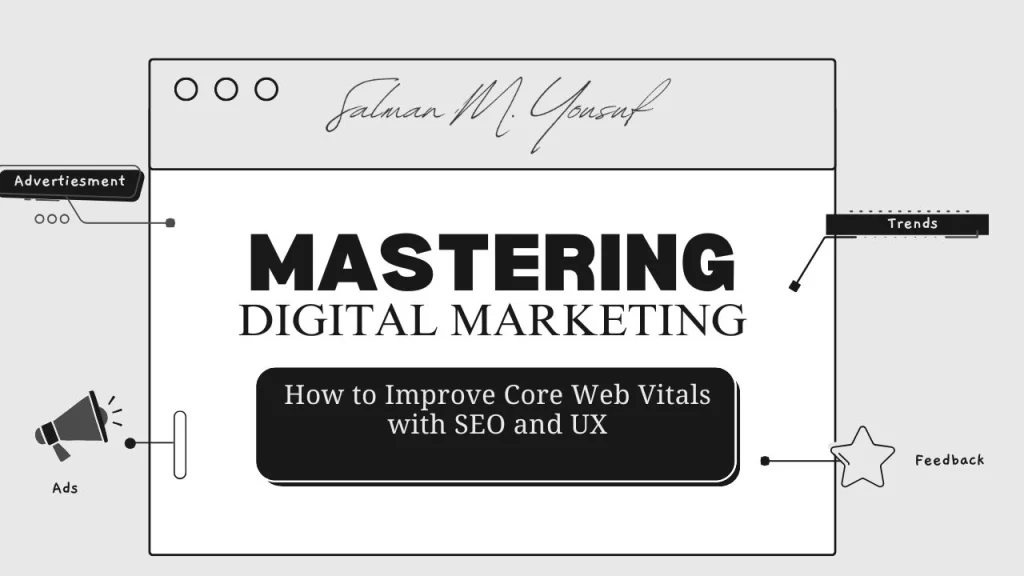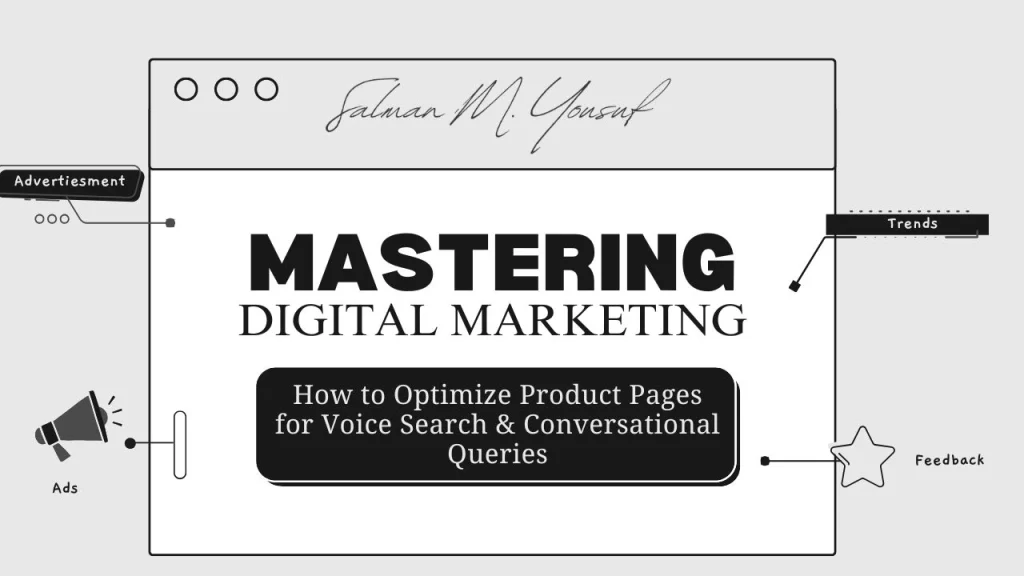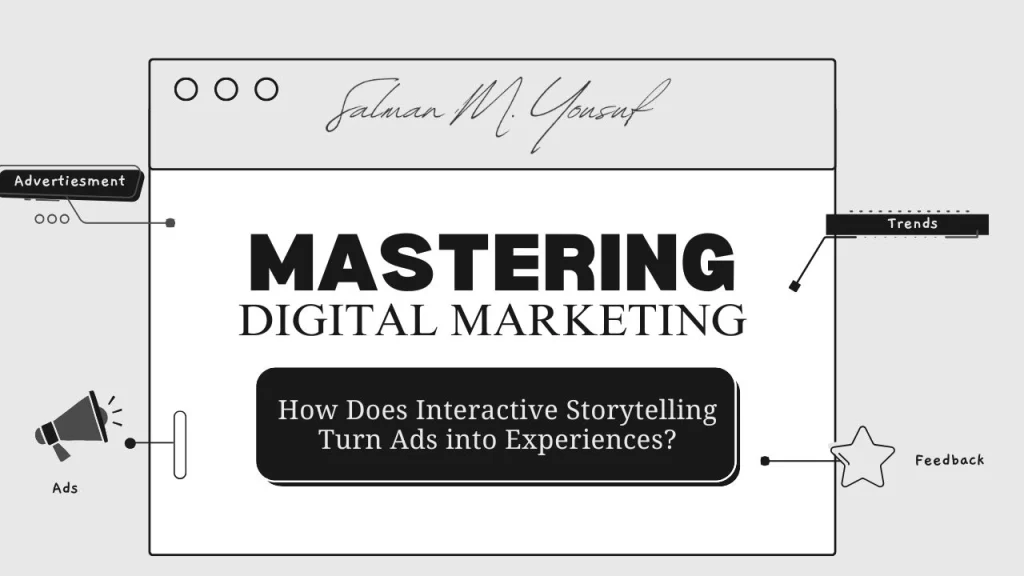But now the cookie era is ending. Google is phasing them out. Safari and Firefox already blocked them. Privacy laws are stricter than ever. For marketers, this isn’t just a technical adjustment — it’s a full reset. So what happens next? Experts like Salman Yousuf emphasize adapting strategies for a privacy-first future.
Why Cookies Mattered in Marketing
Before we explore the future, it’s worth pausing to understand why cookies were such a big deal. They weren’t just random pieces of code — they powered how brands connected with audiences for years. Without that context, the shift we’re seeing now feels less urgent.

The Original Role of Third-party Cookies
Third-party cookies weren’t actual treats. They were snippets of code planted in your browser by advertisers. Visit one site, and they follow you to the next. Over time, they created a detailed map of your interests.
How They Collect Data
They track user behavior by keeping an eye on:
- Browsing habits across sites.
- Products viewed or added to carts.
- Demographics and interests inferred from activity.
Why Advertisers Loved Them
Marketers could:
- Retarget people with ads for products they’d seen before.
- Track browsing behavior across multiple sites.
- Create audience segments for more accurate targeting.
The Push Toward Privacy
This shift away from cookies didn’t happen overnight. It’s the result of years of public frustration, growing awareness, and increased regulation. People wanted more control, and lawmakers responded.
Growing Consumer Awareness
Over time, people realized just how much of their digital lives were being tracked. The outcry grew louder: “I never agreed to this!”
Why it Became a Problem
- Too much “creepy” personalization.
- No real sense of control.
- Lack of transparency from brands.
New Privacy Laws
Governments stepped in. GDPR in Europe and CCPA in California made consent mandatory. Companies had to explain what they were collecting and why.
Browsers Joining the Shift
Safari and Firefox blocked cookies early. Chrome, with its massive market share, is now removing them too. The writing is on the wall: privacy isn’t optional anymore.
What Changes for Marketers?
The loss of third-party cookies changes how businesses reach audiences. But it’s not all doom and gloom. It pushes marketers to rethink strategies and build stronger foundations.
What’s Going Away
Without cookies, marketers lose:
- Retargeting ads that “follow” people.
- Cross-site tracking.
- Rich demographic profiles built from third-party data.
Why that Hurts
These were the shortcuts many marketers leaned on. Their removal forces a shift back to direct engagement.
What’s Gained in Return
At first glance, that sounds like a big loss. But it also forces a healthier shift: marketers will need to rely less on borrowed data and more on direct relationships.
The Rise of First-party Data
If third-party cookies are fading, first-party data is stepping up. This is where the next big wave of marketing will happen.

What it Means
First-party data is information customers share directly — signing up for emails, joining loyalty programs, making purchases, and filling out surveys.
Common Sources of First-party Data
- Website analytics
- Loyalty programs
- Customer purchase history
- Email subscriptions
Why it’s Better
It’s clean, accurate, and permission-based. Customers know they’re giving it, and they get value in return. That makes it more trustworthy than cookie data ever was.
Example in Action
A coffee chain with a rewards app doesn’t need to stalk you online. They already know your order history. That’s powerful, and it feels far less invasive.
Contextual Advertising Makes a Comeback
Cookies may fade, but advertising doesn’t stop. One classic strategy is returning stronger than ever: contextual ads.
Back to Basics
Before cookies, ads were often placed based on context. A recipe blog might show ads for cookware. A travel site might display hotel offers. Simple, relevant, and non-intrusive — much like the principles behind neuromarketing in digital ads today.
Examples of Contextual Ads
- Fitness blogs showing workout gear promotions.
- News articles with ads for relevant books.
- Travel guides featuring hotel and flight offers.
Why it’s Returning
AI has made contextual ads smarter. They no longer just match keywords — they can understand tone, mood, and relevance.
Why Customers Like it
You don’t need to track someone’s every move to serve useful ads. Context alone often does the trick — and consumers appreciate not being shadowed.
The Role of AI and Machine Learning
With cookies gone, AI and machine learning step in to interpret signals and trends.
Smarter Tools without Tracking
Marketers still have signals: time on page, clicks, searches, and purchase intent. AI can read these signals in real time and predict what someone might want.
What AI Can Do
- Predict demand cycles.
- Suggest personalized recommendations.
- Improve ad placements without invasive tracking.
Patterns Over Profiles
Instead of building a creepy “file” on someone, AI looks for patterns happening right now. It’s faster, more relevant, and much more privacy-friendly.
Customer Relationships Take Center Stage
Without cookies, the heart of marketing becomes simple again: relationships.
Why it Matters Again
With cookies gone, marketers must return to basics: earning trust and building loyalty. That means more focus on value-driven communication, not just clever targeting.
Building Trust Through Value
- Share content worth reading.
- Provide rewards worth claiming.
- Offer experiences worth remembering.
From Audience to Community
Brands that thrive will build communities where people want to engage — newsletters worth reading, loyalty programs worth joining, content worth sharing.
The Importance of Transparency
Data is still part of the equation, but how you ask for it makes all the difference.
Customers Want Clear Answers
When you ask for data now, people expect to know:
- Why do you need this?
- How will it be used?
- What do I get in return?
Why it Matters for Loyalty
Answering those questions honestly builds trust. Being vague or sneaky? That backfires. In 2025 and beyond, transparency isn’t just nice branding — it’s survival.
Industry-specific Impacts
Different industries will feel the change in unique ways.
Retail and eCommerce
Retailers will double down on loyalty programs, personalized offers, and mobile apps that track purchases directly.
Media and Publishing
Publishers may need to rely more on subscriptions and smarter contextual ad models.
Travel and Hospitality
Hotels, airlines, and restaurants can lean on booking data and membership programs for personalization.
B2B Companies
For B2B, first-party strategies like gated content, webinars, and account-based marketing will be more important than ever.
Real-world Scenarios
Let’s ground this in reality. Here’s how cookie loss plays out in different industries:
Clothing Brand
Before: retargeting ads followed people around.
After: loyalty perks and personalized emails bring them back.
News Publisher
Before: cookie-driven ad revenue.
After: subscriptions and contextual ads matched to article topics.
Food Delivery Service
Before: third-party profiling.
After: personalized app deals based on actual order history.
Preparing for a Cookie-free Future
Every business can take steps right now to adapt.
Step #1: Audit Your Data
Know what you’re collecting today and how.
Step #2: Upgrade Your Tools
A solid CRM that centralizes customer info will be key.
Step #3: Create Real Value
Offer useful content, discounts, or community perks to encourage signups.
Step #4: Explore Contextual Ads
Test platforms that target based on relevance, not profiles.
Step #5: Train Teams on Privacy
Everyone from marketing to sales should understand the rules and responsibilities.
The Future of Marketing without Cookies
This isn’t the end of marketing — it’s just a shift in direction.
Will Marketing Die?
Not even close. If anything, it will get stronger. Marketing will shift from invasive tracking to trust-driven strategies.
What Winning Brands Will Do
- Collect and use first-party data wisely.
- Embrace contextual advertising.
- Use AI ethically.
- Be transparent about data use.
- Focus on real relationships.
Final Thoughts
The disappearance of third-party cookies may feel like the end of an era, but it’s really a reset.
Instead of being followed by ads you never asked for, customers will engage with brands they choose. Instead of businesses hoarding secret profiles, they’ll earn trust through transparency and value.
This isn’t the death of digital marketing. It’s a healthier version of it. The brands that adapt now will not just survive — they’ll thrive in a world where trust and relevance matter more than tracking ever did.
Ready to future-proof your marketing? Well then, let me help you start building trust-driven strategies — your customers (and your bottom line) will thank you.
FAQs
1. Why are third-party cookies disappearing from digital marketing?
Third-party cookies are being phased out due to privacy concerns, stricter laws, and consumer demand for transparency. Major browsers like Chrome, Safari, and Firefox now block them.
2. What will replace third-party cookies in marketing strategies?
First-party data, contextual advertising, loyalty programs, and AI-driven insights are emerging as the strongest replacements, helping businesses connect with audiences without invading privacy.
3. How can small businesses adapt to a cookie-free world?
Small businesses should prioritize first-party data, build loyalty programs, strengthen customer relationships, and use contextual ads. This approach creates trust while still driving measurable growth.
4. Will marketing become less effective without third-party cookies?
Not necessarily. Marketing will shift toward more direct, consent-driven strategies. Brands that adapt quickly often find their campaigns become stronger, more personal, and more trusted by customers.
5. How important is transparency in a cookie-free future?
Transparency is critical. Customers want to know how their data is used. Honest communication about value exchange builds trust and encourages people to willingly share their information.





